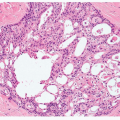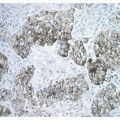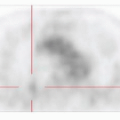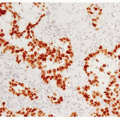Epidemiology and Demographics of Lung Cancer
Philip T. Cagle
Lung cancer remains the leading cause of cancer deaths in the United States,1 Europe,2 and worldwide.3 In 2002, worldwide an estimated 1.35 million people were diagnosed with lung cancer and 1.18 million died of the cancer, the largest number for any type of cancer.3,4 In the United States, there were an estimated 159,390 deaths from lung cancer in 2009 (88,900 deaths in men and 70,490 in women), surpassing the next three most common causes of cancer deaths (colon, breast, and prostate cancers) combined.1 Five-year survival among lung cancer patients is poor and, worldwide, varies between 6% and 14% for men and 7% and 18% for women.4
Tobacco smoking causes more than 90% of lung cancers in men and 75% to 85% of lung cancers in women in the United States and Europe.5 Worldwide, tobacco smoking causes an estimated 85% of lung cancer in men and 47% of lung cancer in women.3 In the United States and other developed countries, changes in smoking habits have resulted in a slight decrease in lung cancer among men in recent years and a stabilization of the incidence in women. However, the rates continue to rise in less developed countries,1,2,3 and 4 and the estimated numbers of lung cancer cases worldwide have increased by 51% since 1985, although in men this seems to be largely the result of population increase and aging.3
Only about 10% of tobacco smokers ever develop lung cancer. Host factors, including difference in enzymes that metabolize carcinogens in tobacco smoke and differences in enzymes that repair DNA, impact the development of lung cancer as do the length and amount of exposure to tobacco smoke.5,6 and 7 Generally, there is a latency period of 20 to 40 years, or more, after the first exposure to tobacco smoke before a smoker is diagnosed with lung cancer. Although the risk of death from lung cancer decreases after smoking cessation compared to those who continue to smoke, the risk does not return to the level of a never smoker. Compared to never smokers, the risk of lung cancer in a former smoker may remain elevated 25 years or more after smoking cessation, although it is much less than that in those smokers who do not quit.5,8,9,10,11 and 12
Stay updated, free articles. Join our Telegram channel

Full access? Get Clinical Tree








